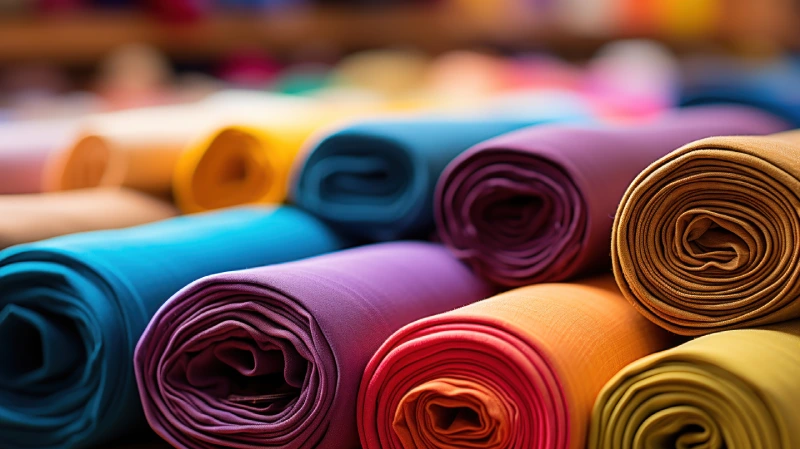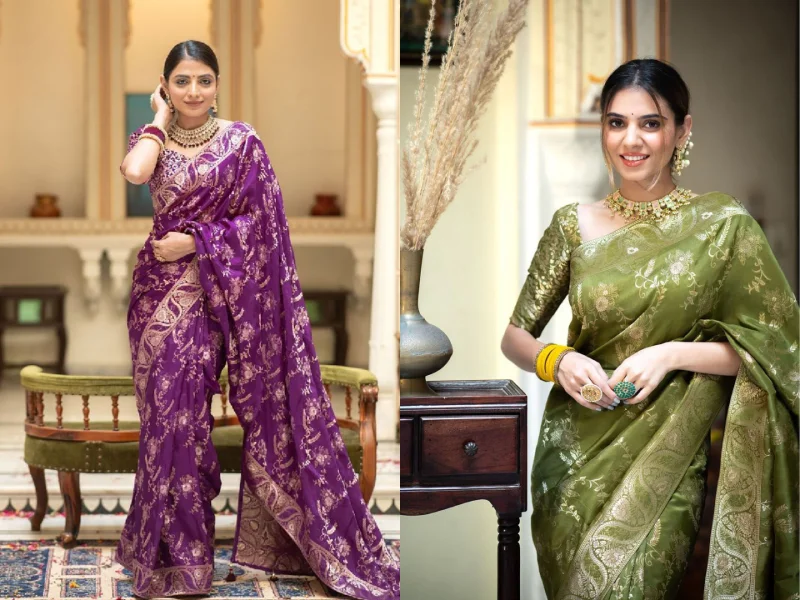Women love getting dressed up in ethnic wear, such as Kurtis, Lehengas, Shararas, Sarees, and more. But as beautiful as they look, it is just as difficult to maintain them. The fabrics used in ethnic wear are delicate, and so they need to be taken care of delicately, too. In today’s article, we will explore tips and ways to maintain your ethnic wear and keep it shining as beautiful as when you bought it so you can flaunt your dresses forever.
Ethnic wear is not just a garment, it’s a vibrant reflection of our culture, showcasing the rich, dynamic, traditional, embroidery and the craftmanship of multiple cultures. However, such delicate fabrics and detailed designs need special care to preserve their beauty and longevity.
Care tips for delicate ethnic fabrics

We Indians love stretching our dresses to check their quality—don’t overdo it. Avoid stretching, pulling, or tugging your dresses, as they will affect their fabric and stretchability.
Certain clothes, especially the traditional ones, have tags explaining the care and washing rules. Check them before you remove them.
Proper storage is key to maintaining the quality and color of your ethnic wear. Fold your garments or hang them in a cool, dry place. Avoid hanging them on balconies with clips or exposing them to direct sunlight, as this can harm the embroidery and fabric quality. Store your dresses with care, preferably in acid-free paper or cloth to prevent yellowing.
The most important point to remember is never to wash your ethnic dresses in a washing machine. Always hand wash or dry wash them with clean and preferably cold water using a mild soap or a liquid detergent. Don’t use bleaching or harsh/powder detergents.
Never wash multiple clothes together; wash them separately to avoid damage and color mixing. Trust me, those ethnic clothes are worth all the work.
Avoid ironing your clothes and rather steam them to remove wrinkles or creases.
How to take care of specific fabrics

Silk doesn’t demand ironing or even steaming. Just dry it flat on the surface or hang it to prevent wrinkles. Avoid washing it in the machine; hand wash it with water below 30 degrees with liquid detergents.
Embroidered fabric: Avoid washing it in the washing machine. Hand wash it with water below 30 degrees with liquid detergents and use steaming to get rid of creases. Ironing is a big no for embroidered fabrics.
Cotton—Some ethnic cotton wear may require a bit of ironing, but make sure you don’t overdo it on the detailing and designs. Hand wash cotton fabrics as well with water below 30 degrees and avoid using harsh soaps; liquid detergents are always the best.
Velvet—The same rules apply to velvet fabric as well. Hand wash it but do not iron it; dry clean only. You can use a brush to gently remove dust particles.
Chiffon: Hand wash it with water below 30 degrees and mild soap or detergent, don’t iron it, and hang it to prevent wrinkles.
Additional tip – you can also reshape garments while wet to prevent wrinkles.
Tips for preserving Banarasi sarees

Banarasi sarees are an iconic symbol of Indian culture. They originated from the city of Varanasi, formerly known as Banaras, and have been a foundation of Indian fashion for ages.
They are known for their detailed designs and patterns, vibrant colors, and craftsmanship. They are available in various fabrics, such as silk, cotton, and blends. Every woman slays the traditional look, and Banarasi sarees are the most popular among women.
How do we preserve their beauty?
• Store and dry Banarasi sarees in a cool and dry place; avoid washing machine.
• Dry clean it only when necessary
• Avoid stacking it with other dresses to avoid damage
• Use a brush to remove dust particles
• Store it in acid-free paper or cloth to prevent yellowing
• Consider professional cleaning or restoration for heavy sarees
And you’re good to pass it down to generations and preserve the legacy.
Caring for silk and chiffon sarees

Silk sarees are made from natural silk fibers, known for their smoothness and softness. They can be light or heavy weight, both. They give you a perfect, elegant look.
Chiffon sarees are made from synthetic or silk chiffon fabric, which is known for its airy, lightweight, and flowing texture. They are easy to drape and comfortable to wear.
The washing rules are the same for silk and chiffon sarees, too. Don’t twist them after washing, and gently remove the excess water. Use a low-temperature setting to iron them and hang them to remove the creases. The care that needs to be taken is not too difficult; you just need to know the right steps. Treat ethnic wear delicately.
How to avoid damage to delicate ethnic fabrics

The sooner you treat the stain, the better. Use a wet, clean cloth or a paper towel to blot the stain; don’t rub it, as it can damage the fabric or spread the stain even more.
If the stain is light, removing it simply with water and soap is easy, but the quicker you act, the better. If the stain is dark enough, you can use different methods, like a mild detergent or stain remover specifically designed for removing stains from delicate fabrics.
Soak the garment in cold water for a few hours or overnight after applying a mild detergent. Repeat the process if needed. If you still can’t get rid of it, consider taking it to a professional dry cleaner.
CONCLUSION
Traditional dresses automatically make us feel beautiful, but in order to maintain their beauty as well there are certain steps that you need to remember to prevent your ethnic wear from getting damaged or dull. Nothing lasts without taking care of it, right? So, take care of your dresses too; unlike humans, they won’t disappoint you.
It is not too hard to maintain your beautiful ethnic wear. If it is taken care of properly, you can easily pass it down the line, too. Almost the same rules apply to all types of ethnic wear. Do it right, and you won’t face a problem, and you can then live your Bollywood era with no worries. Your time and effort in this process are truly worth it.




